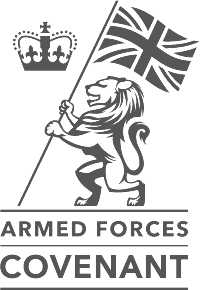Healthcare case studies: Identifying service users from the Armed Forces Community
***This Covenant case study database is still being built. If you have any case studies about identifying service users from the Armed Forces Community, suitable for adding to the database, please submit a case study.***
Improving identification of veterans on NHS systems
- In 2018, in response to data highlighting the veterans’ code was applied to veteran patients in only 7.9% of cases, Prof. Alan Finnegan created a study to find ways to motivate veterans to notify primary care staff of their veteran status or register with a GP, and to improve primary care staff’s understanding of veterans’ health issues. The study found that, after a 6-week intervention period centred on an advertising campaign, the number of patients with a veteran code increased by 200% (180 to 537 in Lancashire).
- Gateshead Armed Forces Network identified that there were very low numbers of veterans registered and coded at GP practices in Gateshead, and Newcastle Gateshead Clinical Commissioning Group (CCG) agreed to carry out a project to increase this. From 2014-15, the project involved the CCG including veteran identification as one of its Quality Indicators that practices could choose to focus on. During 2016-17, veteran identification was also added to the CCG’s master templates installed on all practice clinical systems. At the start of the project there were only 368 veterans registered, identified and coded in Gateshead. By February 2019 this had increased to over 7000. As a result of this, GP practices in Gateshead can now better identify veterans with long-term conditions which might be due to Service. This means veterans can then be sent to appropriate NHS services, which could be veteran-specific. The CCG has also been working to further share and extend this best practice across Newcastle, and across the North East Armed Forces Forum (covering 12 local authority areas).
